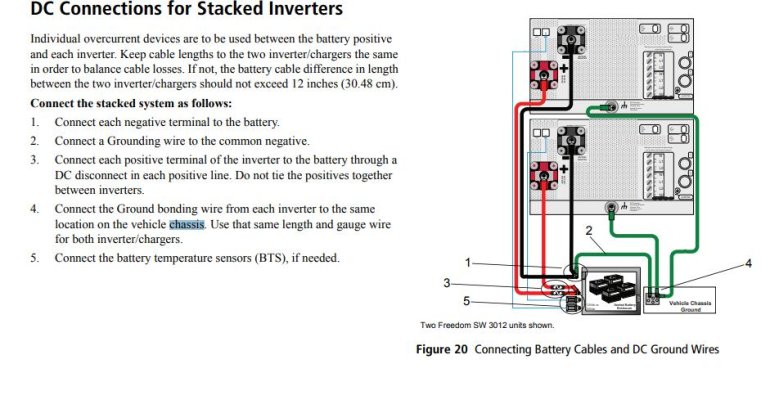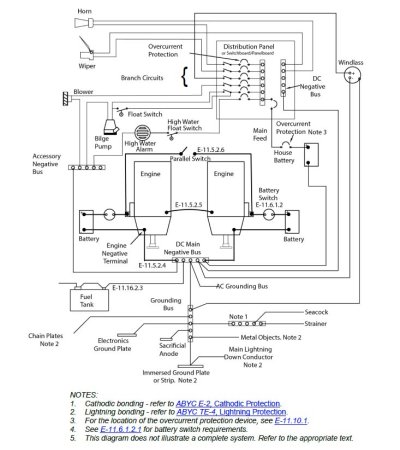SV stated: Helmsman. You are thinking. The case/chassis is normally not energized. With AC ground and DC- bonded if the case becomes energized then either the AC breaker or the DC fuse would open, or would they?
—————
Helmsman: There are different scenarios depending on the way the inverter is wired.
Perhaps, but not necessarily, though more likely with an AC short feeding the ground attached to either the B- or the redundant ground to the buss bar. Any inherent resistance in the case could trip one or the other.
—————
SV stated: AC is designed to trip breaker if power leaks into the green ground. But DC power into a separate chassis ground wire goes back to the same place as the main DC-, why would the fuse open because current is travelling on a different wire?
—————
Helmsman: It usually isn’t a none or all. The current flowing back to the battery may not equal the current flowing out. That is what is fused. Some of the current may flow through the case to the ground to the engine or buss bar. If, on the other hand, the metal case resistance is low enough, and you have the ground jumpered to the B-, then you might very well have a live case.
—————-
SV stated: If DC- & AC green were not bonded then a chassis wire to green ground would protect a person from touching a hot case without leaking AC into the bonded circuit, into the water.
—————
Helmsman: The AC green wire would never handle the amount of amps flowing through a DC circuit the size an inverter needs to convert to 110. It would just melt and burn. Nor would the bonding system, which is designed to equalize electrical charge between underwater metals. Those wires would melt, too. That is the reason the ground has to be either the same as the DC cables or one smaller size.
—————
SV stated: Back on topic, since everything is bonded why not ground the chassis to the DC- already present as the traveler to ground.
—————
Helmsman: No reason to respond to this again, but….redundancy in case of circuit interruption, or perhaps in the case of a closed inverter/charger to battery circuit, an alternate path to ground if the case is energized, if the DC circuit doesn’t have one.
—————-
SV stated: What was the reason ABYC made that a rule?
—————-
Helmsman: I personally can’t speak for the ABYC. Perhaps a call to them would elicit a response for you. I think they will probably echo the many thoughts provided throughout this discussion, but again, probably best to just pick up the phone and call them.
Sincerely hope this helps, but I am now probably moving into the theory of electricity. The theory of electricity is something I am still a novice with. Though one day I do hope to understand it better.



 Let's talk about anchors or guns aboard for awhile.
Let's talk about anchors or guns aboard for awhile.
